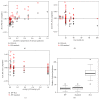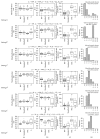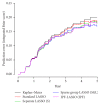IPF-LASSO: Integrative L1-Penalized Regression with Penalty Factors for Prediction Based on Multi-Omics Data
- PMID: 28546826
- PMCID: PMC5435977
- DOI: 10.1155/2017/7691937
IPF-LASSO: Integrative L1-Penalized Regression with Penalty Factors for Prediction Based on Multi-Omics Data
Abstract
As modern biotechnologies advance, it has become increasingly frequent that different modalities of high-dimensional molecular data (termed "omics" data in this paper), such as gene expression, methylation, and copy number, are collected from the same patient cohort to predict the clinical outcome. While prediction based on omics data has been widely studied in the last fifteen years, little has been done in the statistical literature on the integration of multiple omics modalities to select a subset of variables for prediction, which is a critical task in personalized medicine. In this paper, we propose a simple penalized regression method to address this problem by assigning different penalty factors to different data modalities for feature selection and prediction. The penalty factors can be chosen in a fully data-driven fashion by cross-validation or by taking practical considerations into account. In simulation studies, we compare the prediction performance of our approach, called IPF-LASSO (Integrative LASSO with Penalty Factors) and implemented in the R package ipflasso, with the standard LASSO and sparse group LASSO. The use of IPF-LASSO is also illustrated through applications to two real-life cancer datasets. All data and codes are available on the companion website to ensure reproducibility.
Figures






References
MeSH terms
LinkOut - more resources
Full Text Sources
Other Literature Sources
Research Materials

